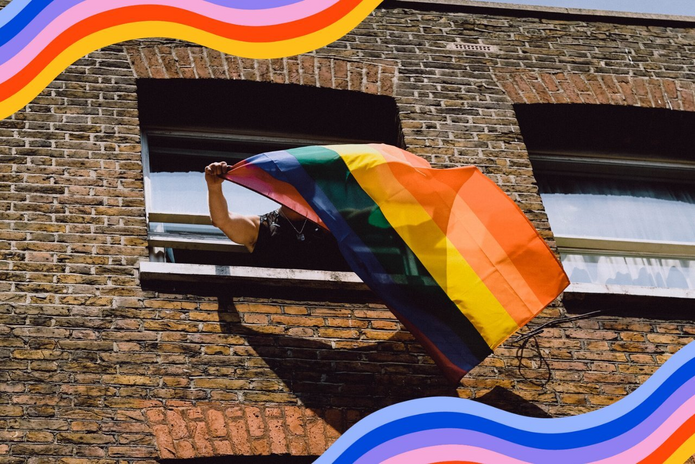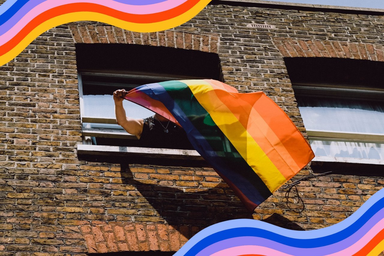Transgender is not new. Neither is homosexuality. Sadly, neither is transphobia or homophobia. It’s important to learn from the past and make the, not new, hope of inclusion a reality. So, these are some fascinating stories of LGBTQ+ people in history that have often been forgotten.
1. Oscar Wilde
Playwright, novelist and a poet with charming wit and an over-achiever, he was one of the first people to ‘be famous for being famous’ even before he rose to literary acclaim. Wilde excelled academically: won scholarships to attend both Trinity College and Oxford. He wrote for a woman’s magazine until, in 1891, The Picture of Dorian Gray marked the start of a literary streak. The year was also the start of his relationship with Lord Alfred Douglas. He reached his peak in satire with The Importance of Being Earnest, first performed on February 14, 1895. Two weeks after, Lord Alfred’s father accused Wilde of “posing as a sodomite”. Fatally, Wilde sued for libel and lost.
He lost much more than a court case. It was during the trial he delivered the enduring euphemism for homosexuality; “love that dare not speak its name”. Elaborating, Wilde said “It is that deep spiritual affection that is as pure as it is perfect… The world mocks at it, and sometimes puts one in the pillory for it.” For the crime of, essentially, being gay, he was sentenced to gruelling hard labour for two years. He died two years later in poverty. With thousands of other gay men, the government finally pardoned him of this “crime” in 2017.
2. Hatshepsut
In the inner chambers of the Deir el-Bahri temple, a pharaoh wearing the cobra headdress, false beard and kilt of a king is depicted. Yet, inscriptions on the temple walls are feminine. It is the tomb of Hatshepsut, one of the few female rulers of Egypt. Power was initially passed to a male heir, with Hatsheput being a regent. Unsatisfied with this passive role after 7 years, she assumed full powers and title of a pharaoh. She has been regarded as one of the most successful leaders in Ancient Egypt. She oversaw the expansion of trade, sea voyages and construction of a great temple at Dier el-Bahari. She insisted her official representations include the traditional male symbols of the pharaoh. ‘The King Herself’, as she would be known, blurred gender lines. It is possible this was more to gain respect as a female leader rather than being fuelled by identity. Though with descriptions of her by scholars find her “disconcerting…act of outrageous deception, deviant behaviour or both”, it is impossible not to find similarities with transphobia. Thutmose III repressed the story of Hatshepsut’s rule to prevent other women from using the precedent to gain power. She remained forgotten in that tomb until modern historians reconstructed damaged inscriptions and, now, the legend of ‘The King Herself’ lives on.
3. Frida Kahlo
One of Mexico’s greatest artists, Frida’s art often represents struggle and hope. In September 1925, the bus she was on collided with a streetcar. A handrail punctured through her hip, spine and pelvis. After this horrific incident, she would experience recurring pain for the rest of her life. But faced with a lengthy recovery and uncomfortable full-body cast, she picked up a paintbrush. The following year she finished the first of her trademark self-portraits. Despite her marriage to Diego Riviera, she had many affairs with both men and women (as did Diego). These are thought to include fellow artist Georgia O’Keefe, performer Josephine Baker and actress Dolores Del Rio. She once said, “There have been two great accidents in my life. One was the trolley, and the other was Diego. Diego was by far the worst.”
4. Leonardo Da Vinci
One of the world’s most famous artists. Yet, his homosexuality is often forgotten. Other Florentine artists were also thought to have been gay. In fact, the word ‘Florenzer’ became slang in Germany for gay. In 1476, he and three other men were anonymously accused of committing sodomy. Due to a connection to a higher-up, no charges were brought as long as no further accusations were made. A few weeks later another complaint was made, but without witnesses, the case was dropped. Leonardo had several male lovers. His paintings and sketches often show nude male portraits, whereas women are seen from the waist up and clothed. Saint John the Baptist, one artwork, is said to be modelled after his apprentice and lover Gian Giacomo Caprotti da Oreno. Leonardo gave him the nickname ‘Salai’ or ‘little devil.’ Scholars believe his difference added to his unique creativity that has cemented his name in history.
5. Gladys Bentley
This blues singer rose to fame during the Harlem Renaissance. She was known for her trademark white tuxedo, raunchy songs while flirting with women in the audience. She headlined at many famous clubs with a backing chorus of drag queens. Due to her family’s rejection of her, Bentley ran away at 16 to Harlem. It was home to like-minded entertainers like Bessie Smith and Ethel Waters who were also known for being sexually-fluid. Bentley was openly lesbian. She claimed to have married a white woman in the early 1930s. Reportedly, after she told a gossip columnist she was married, he asked ‘well, who’s the man?’ ‘Man?’ She scoffed in reply, ‘It’s a woman.’ After the decline of speakeasies, she maintained a music career. But in 1952, she wrote in Ebony magazine she had had medical treatment to find her ‘womanliness’. She started wearing dresses and was, for a short period, married to a man. It is thought this was a response to the hostile, conservative 50s culture, in which homosexuality, like communism, was seen as a threat to America.
Although we have progressed from these discriminatory times in history, it is hard to forget that the familiar refrain of feeling like an outsider in these stories is still felt by many today.



